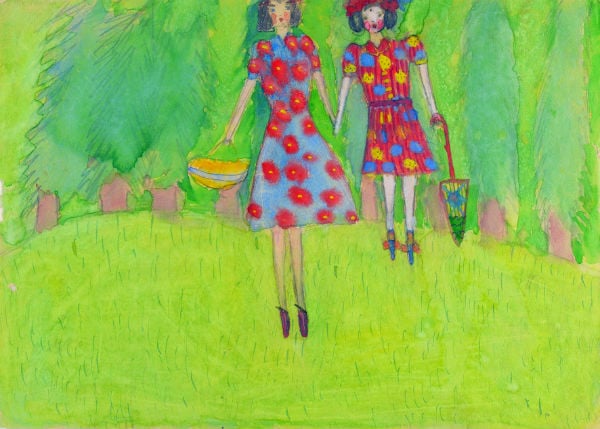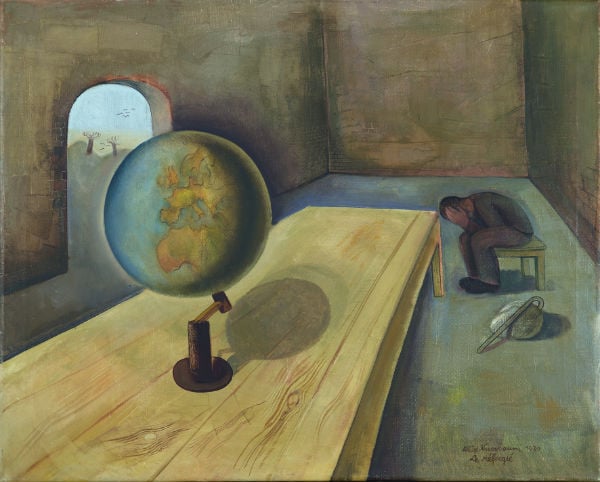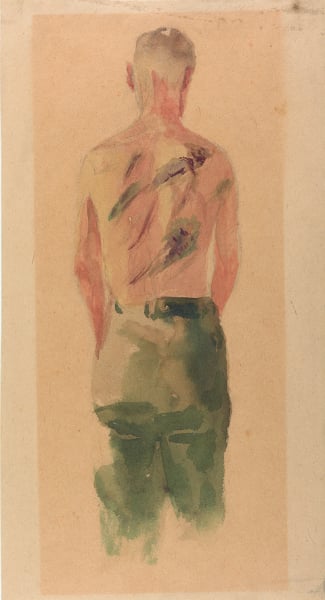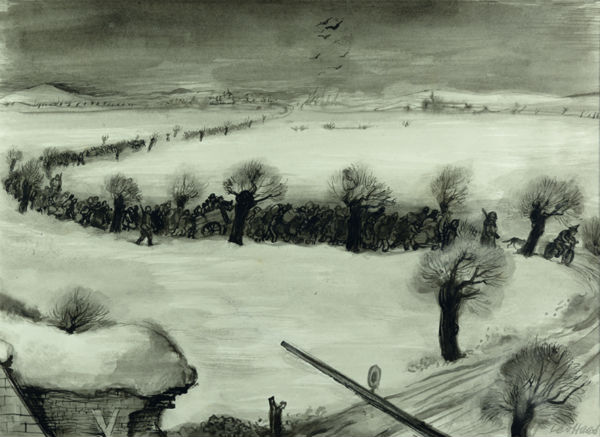Art & Exhibitions
Angela Merkel Opens Berlin Exhibition of Art Created During the Holocaust
The works were all made in hiding, ghettos, or camps.

Photo: © Collection of the Yad Vashem Art Museum, Jerusalem
The works were all made in hiding, ghettos, or camps.

Amah-Rose Abrams


Felix Nussbaum The Refugee (1939)
Photo: © Collection of the Yad Vashem Art Museum, Jerusalem
“Art from the Holocaust,” an exhibition of works made by Jewish artists in hiding, camps, or in ghettos during the holocaust was opened by German Chancellor Angela Merkel at the German History Museum in Berlin yesterday. The exhibition at the I.M Pei designed Museum contains 100 works from Yad Vashem, the Holocaust Remembrance Center in Jerusalem.

Jacob Lipschitz Beaten (My Brother Gedalyahu) (1941–1944)
Photo: © Collection of the Yad Vashem Art Museum, Jerusalem
“In these works that survived the Holocaust, we discern the power of art in revealing the personal perspectives of the Jewish victims,” said Yad Vashem chairman Avner Shalev in press release issued by the museum. “This exhibition allows for a rare encounter, specifically in Berlin, between contemporary spectators and those that lived through the events of the Shoah. Each work of art from our unique collection constitutes a living testimony from the Holocaust, as well as a declaration of the indomitable human spirit that refuses to surrender.”
The exhibition highlights both the horrific ordeals endured by some of the artists, and moments of retreat into inner worlds in the midst of the horrific events that took place during WWII. Some of the works on view were made by artist Nelly Toll, who hid with her mother from the Nazis in a Christian family’s house in Nazi-occupied Poland during the war. The fairy tale illustrations she made provided much needed escapism for the then 8-year-old girl.

Nelly Toll Girls ind the Field (1943)
Photo: © Collection of the Yad Vashem Art Museum, Jerusalem
“There is no evidence in the pictures of war, even though any minute our door might have opened to let the Nazis in,” Toll, now 80 and living in New Jersey, told the New York Times.
Also on view are works by known artists Felix Nussbaum and Ludwig Meidner as well as works made in secret, or containing hidden messages of resistance. Bedrich Fritta was deported to Auschwitz and killed after subversive “V” resistance symbols were found in his works; Leo (Lev) Haas, who was also deported but survived, buried 400 of his artworks which he retrieved after the war had ended, and also helped to find 200 buried works by Fritta.

Leo (Lev) Haas Transport Arrival (1942)
Photo: © Collection of the Yad Vashem Art Museum, Jerusalem
“In an uncompromising act of resistance the artists drew and painted in mortal danger. Some vividly portray the atrocities and humiliations they had to endure, while others seek to counter the relentless dehumanization by highlighting the individual and the inner spiritual life,” explains Eliad Moreh-Rosenberg, curator from Yad Vashem.
The Guardian reports that the German councillor stressed the importance of such exhibitions at a time when Germany is facing an influx of refugees and asylum seekers from the Middle East. “We must focus our efforts particularly among young people from countries where hatred of Israel and Jews is widespread,” Merkel said.
The works in “Art From the Holocaust,” were selected from the collection at Yad Vashem by Moreh-Rosenberg and Walter Smerling, from the Foundation for Art and Culture in Germany.
“Art From the Holocaust” is on view at the German History Museum, Berlin from January 26 to April 3, 2016.